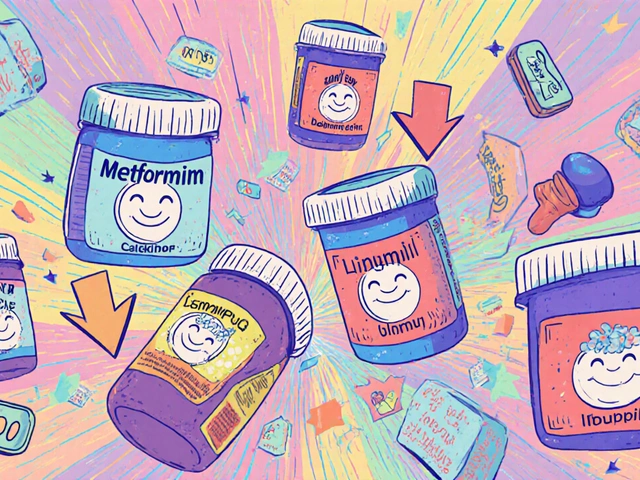Revia (Naltrexone): What It Does and How to Use It
Ever wondered how Revia works for alcohol or opioid problems? Revia is the brand name for naltrexone, a medication that blocks opioid receptors in the brain. That makes alcohol and opioids less rewarding and helps reduce cravings and relapse. It's not a magic fix, but it can be a strong tool when used with counseling or support groups.
Who gets prescribed Revia? Doctors usually offer it to people who want to stop drinking heavily or who have had opioid dependence and are committed to staying opioid-free. For opioid users, you must be detoxed first — taking Revia too soon can cause sudden withdrawal. For alcohol, many patients start Revia after a period of reduced drinking or detox under medical supervision.
How do you take it? The common oral dose is 50 mg once daily. There is also a long-acting injectable version (Vivitrol) given monthly, but that’s a different product. Take Revia with or without food. If you miss a dose, skip it and take the next one at the usual time — don’t double up.
Side effects and safety checks
Common side effects include nausea, headache, fatigue, and sleep problems. Less common but serious risks include liver damage, especially at high doses or with heavy alcohol use. Your doctor will usually check liver enzymes before starting and again during treatment. If you have hepatitis or very high liver tests, your provider may choose a different approach.
Revia blocks the effect of opioids. That means it prevents opioid pain meds from working and can trigger withdrawal in people who still have opioids in their system. Never use opioid painkillers while on Revia unless directed by a specialist. Also be careful: if you stop Revia and later take opioids, your tolerance may be lower and the overdose risk rises.
Practical tips for using Revia
Talk openly with your doctor about other meds, supplements, and liver disease. If you’re planning surgery or need strong pain relief, tell your care team so they can plan safely. Use Revia together with therapy or peer support for the best results. Keep a medical ID or note saying you take naltrexone — emergency teams need to know you won't respond to opioid pain medication.
Where to get it safely? Revia requires a prescription. Avoid online sellers that don’t ask for one. If cost is a concern, ask your provider about generic naltrexone, patient assistance programs, or local clinics that offer help. Remember, medication works best as part of a plan that includes counseling, lifestyle changes, and regular check-ins with a clinician.
If you have questions about starting or stopping Revia, or about interactions with other drugs, call your doctor or pharmacist. They can help you weigh benefits and risks and set up monitoring. Revia is a practical, evidence-based option for many people trying to stay sober — with the right support, it can make a real difference.
Start small: set realistic goals, track drinking or cravings, and celebrate small wins daily.
This article dives into the world of affordable Revia online, offering a detailed look at its medical benefits, side effects, and drug interactions. Learn about the most common dosages and recommendations for using Naltrexone effectively. Discover tips for finding this medication online responsibly and safely. A must-read for anyone considering or currently taking Revia.
View Details

